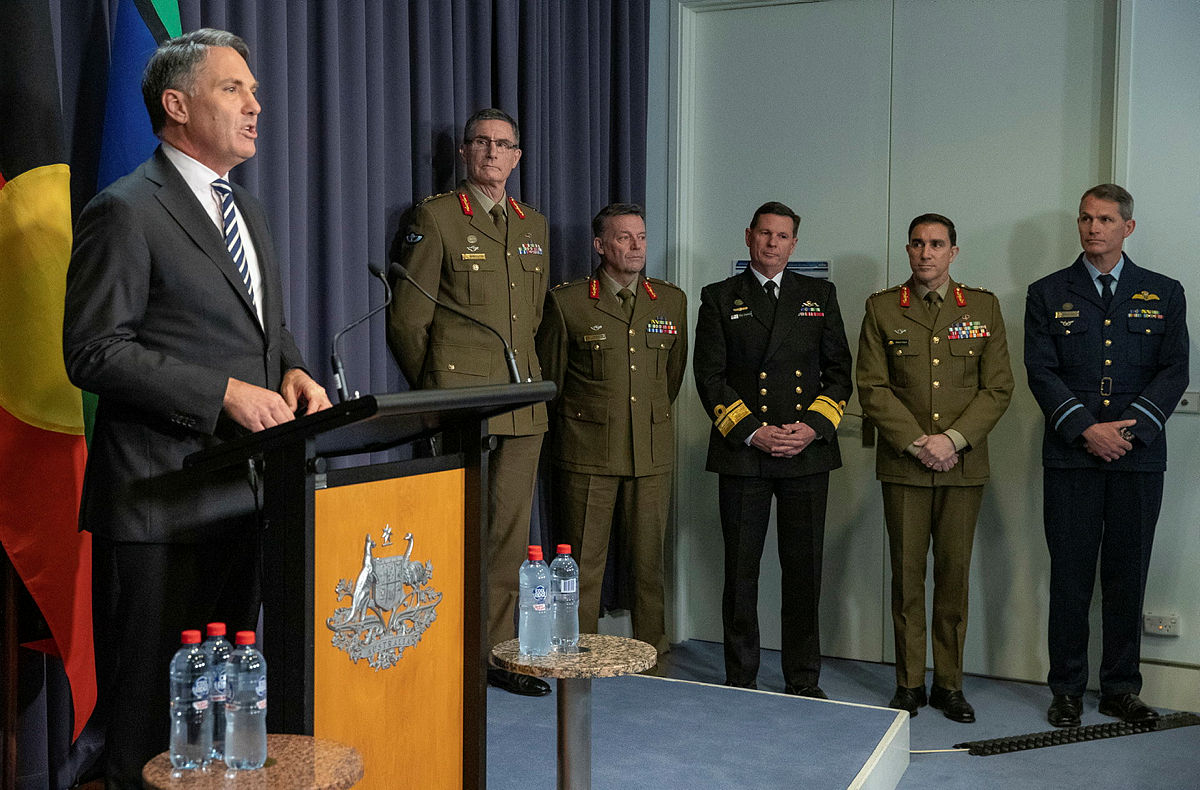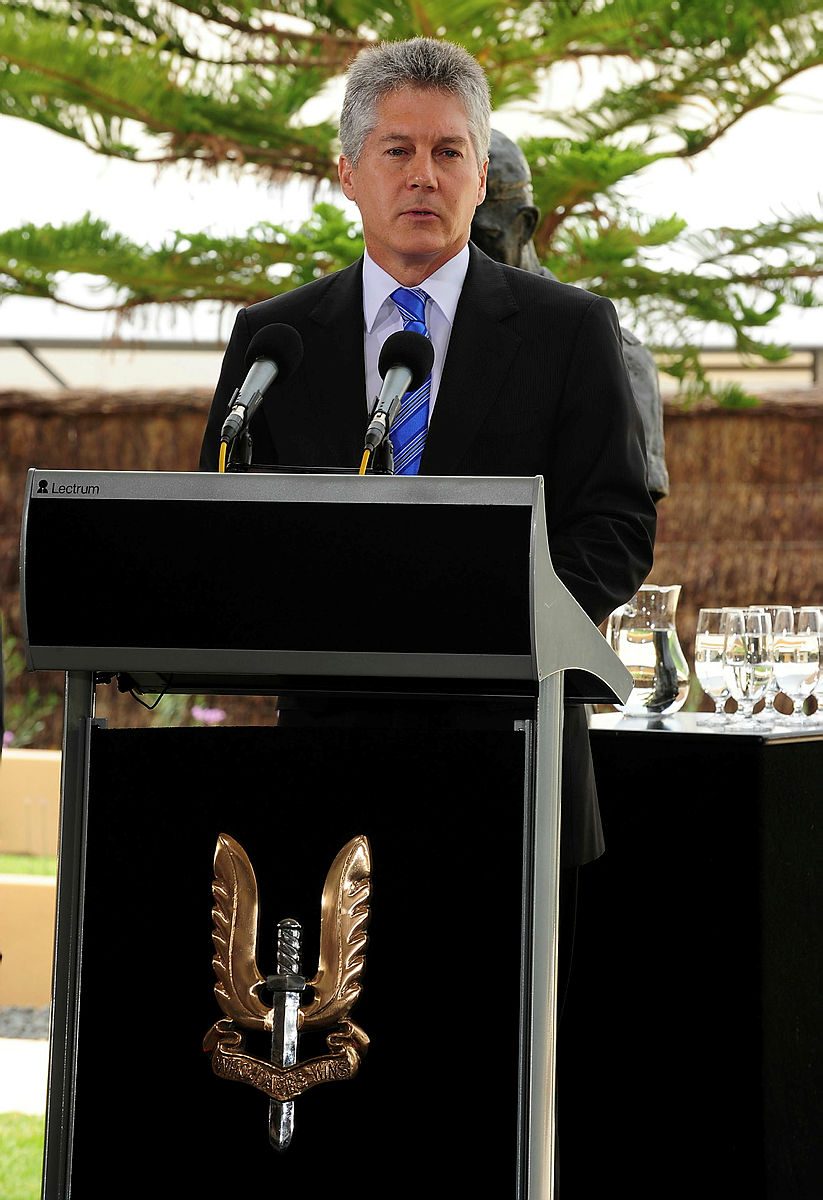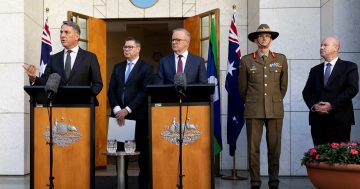
Defence Minister Richard Marles introduces the new ADF leadership team in June. Photo: Kym Smith – ADF.
Prime Minister Anthony Albanese and Defence Minister Richard Marles have delivered on a pre-election promise to implement a new Defence Strategic Review.
To be led by former Gillard/Rudd government defence minister Professor Stephen Smith and retired Chief of Defence Force Air Chief Marshal Sir Angus Houston, the review will seek to clarify Australia’s current and projected strategic security environment, and outline potential credible contingencies that may arise in the next decade or two.
This latest review will seek to ensure current and planned ADF projects – many of which were formulated in mid- 2020 in the Morrison government’s 2020 Force Posture Plan and accompanying Defence Strategic Update.
The review’s terms of reference state: “The review is to be informed by intelligence and strategic assessments of the most concerning threats which challenge Australia’s security. The review will take into account the capability investment, force posture, and preparedness implications of Defence policy and plans, cognisant of relationships with partners and allies.”
A joint statement by the PM and Defence Minister issued on 3 August reads: “The Albanese Government is committed to ensuring we have a capable and sustainable Australian Defence Force, which is informed with the best possible strategic assessments. As independent leads, Professor Smith and Sir Angus will ensure the review’s recommendations to government meet this criteria.”
As time is of the essence, the review is to be completed by “no later than March 2023”.
There are several key major equipment decisions to be made for the ADF in the next 12 months, including but certainly not limited to: what type of nuclear-powered submarine to acquire; whether to buy additional Lockheed Martin F-35A fighters for the air force; and what type and how many heavy armoured vehicles the Army should acquire.
Other big-ticket projects due to mature in the next year include the selection of a new integrated air and missile defence system, and a sovereign space-based satellite communications program, while a plan to acquire up to 70 new helicopters for the Army may also be subject to review.

Former Gillard government defence minister, Professor Stephen Smith will head up the review along with former Chief of Defence Force, Air Chief Marshal Sir Angus Houston (Ret’d). Photo: Chris Moore – ADF.
But the review will likely be looking at much more than just capital acquisition programs. It is generally accepted that the opening campaigns of any future war will not be declared and will instead be fought in the ‘grey zone’, that hazy area between peace and war where state and non-state actors engage in offensive cyber operations, provoke trade and maritime disputes, make spurious territorial claims, and influence through questionable foreign investment and other coercive statecraft. Indeed, many analysts agree that operations in the grey zone have been in progress for years, and are increasing.
Therefore, considerations of the review should include Australia’s ability to resist and counter cyber-attacks, to protect our key trade routes and build resilience into our supply chains, a build up of our national fuel reserves, to effectively repair key military and civilian infrastructure, to protect the sealines of communication, and to expand and protect forward operating bases and key civilian infrastructure.
The size of the ADF has given it a degree of agility and adaptability that larger defence forces burdened with inertia may not be able to match. But the ADF lacks depth – not just in overall number of platforms such as ships, aircraft, and vehicles, but in ammunition and war stocks, in the ability to quickly replace and repair equipment, in sustainment and logistics, and of course, in people.
Therefore, the review must also consider not only how a more forward-leaning ADF would sustain itself, but how quickly and seamlessly it can integrate with coalition allies through our various joint constructs such as ANZUS, AUKUS, and The Quad.
With time being a key imperative, it may be necessary to abandon or defer some of the more ambitious plans to develop local weapons manufacturing capabilities through the previous government’s plan to build the next class of submarines in Adelaide, and to establish the Sovereign Guided Weapons and Explosive Ordnance Enterprise.
Whilst such sovereign capabilities are noble and will eventually reduce Australia’s dependence on foreign suppliers, they cannot be established quickly. Therefore, it may be necessary to balance this by initially buying and importing foreign-made systems – including submarines – in the short-to-medium term. It may also mean some of the ADF’s more cumbersome acquisition processes may need to be bypassed in favour of rapid or sole-source off-the-shelf equipment acquisitions.
And then there’s funding. The pandemic and other factors have left Australia more than 900 billion dollars in debt and, despite the strategic imperative, the need to pay down that debt is arguably equally urgent. Therefore, a balance will need to be found between bringing some ‘low hanging fruit’ capabilities forward to satisfy some immediate requirements, while pushing funding for some of the bigger ticket items out to the right.





















